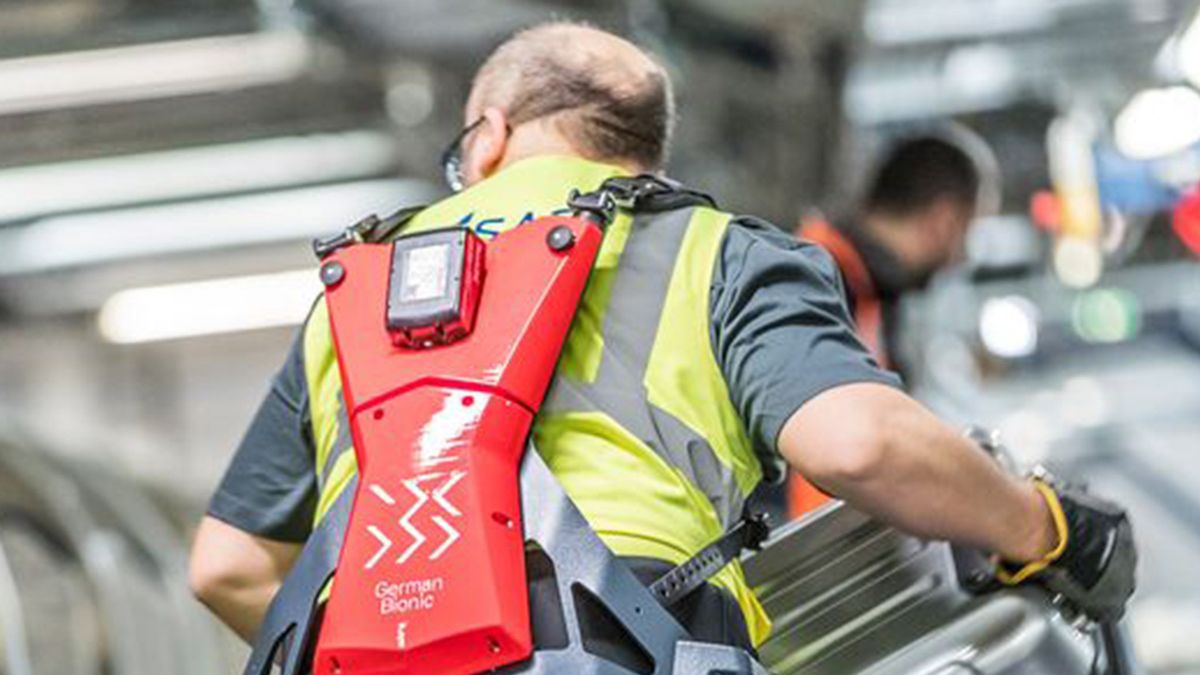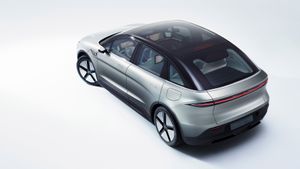
JAKARTA - Humans are probably still far from being able to use Power Loader technology properly. But advances in exosuit technology are rapidly changing the way people perform physical tasks in their daily lives.
Some technologies have been designed to help rehabilitate spinal cord injury patients, while others are designed to enhance Marine soldiers' combat abilities. In addition, many are made just to make work physically repetitive and less stressful for the people who do it.
But now German Bionic claims they are smart enough to learn from the mistakes of their users: the 5th generation Cray X.
The Cray X fits the workforce like a 7kg backpack with hip-mounted actuators that actuate the carbon fiber bands attached to the upper leg. It allows a person to easily lift and walk with loads up to 30kg (66 lbs) with both legs and back fully supported.
While not actively assisting the person's shoulders and arms while performing the task of lifting weights, the Cray X offers an Intelligent Safety Assist system to help reduce general lifting injuries.
“This is a real software application that runs in the background and can alert workers when ergonomic risks become too high,” Norma Steller, Head of IoT at German Bionic told Engadget.
“For example, recommending rest because we know that … repetition and overall stress can lead to fatigue, and fatigue can lead to injury. This is what we want to prevent," she added.
SSC not only collects granular telemetry information such as what load is being lifted, ergonomic risks such as twisting during lifting, and potential environmental factors. This tool uses machine learning algorithms to analyze the data to match the external framework to the workers who use it, via OTA software.
Not only is this data displayed to the workers themselves on attached monitors, but Cray X also transmits that data to a chain of custody that allows managers to monitor the movements of their employees, to ensure that they are not overextending themselves.
"Because we collect every step and every lift, the data we provide is much more accurate," Steller said.
The data that Cray collects is collected from real-world use, not from lab tests or supervised trials, where workers are at their best ergonomically.
“Especially in logistics, every step, every lift, every trend is usually planned. But sometimes in the real world, not all plans are accomplished and then we suddenly see workplace performance go down very, very quickly. And with the data we provide, you can really do some investigation and find out why (the reduction happened).”
SEE ALSO:
Steller sees the Cray X as a "precautionary device" designed to ensure workers don't overexert themselves. "We are a prevention tool, so we prevent injuries," added Steller. “We are not considered a medical [device manufacturer]. We think of ourselves as an external framework for industrial use.”
The Cray X is now rated IP54 for dust and moisture so it can work in all warehouse environments except the dirtiest.
While the Cray X is designed to be installed and removed in under a minute, it can be worn for a full shift without having to remove it thanks to the new 5th generation hot-swappable 40V battery system.
“We implemented a hot-swapping function so you can drop it on the spot without having to turn off the device,” Marius Kiss, Head of Mechanical R&D at German Bionic told Engadget.
“You can take out [used batteries] and replace new ones, as well as put the old ones in the charging station. We used a Makita fast charging station which charges the battery in 30 to 40 minutes and then you can resume it. You can potentially work eight hours without having to remove the exoskeleton.”
As useful as the current generation of exoskeletal technologies, the German Bionic team sees them becoming more capable, and widespread, in the years to come.
"We will see more specialized exoskeletons in the future as the technology becomes more available," Steller said. “I think they will enter our world, not only in the B2B industrial sector. We will see them basically everywhere because we have the opportunity to augment our bodies and usually humans take the opportunity to do that”.
“I literally saw everyone on the street wearing the exoskeleton in one form or another,” added Eric Eitel, Head of Communications at German Bionic. “But I think the exoskeleton we are looking for in the future is an active one. I see them become much leaner, smarter, and connected.”
Even as the technology progresses to consumer use, Eitel believes exoskeletons are likely to remain a common sight in industrial environments. “There are still a lot of workspaces that can't be automated and I think it will stay that way for a long time. You still have to rely on people, so we don't want to replace all humans. I really see that technology goes hand in hand with [automation].”
"We see robots as more of a companion, our product is actually a companion," added Kiss. “I think this is just another possibility, there are still situations where automation still makes sense. When you go into a dangerous environment, you really need to automate it. But why should we automate everything?”.
The English, Chinese, Japanese, Arabic, and French versions are automatically generated by the AI. So there may still be inaccuracies in translating, please always see Indonesian as our main language. (system supported by DigitalSiber.id)


















